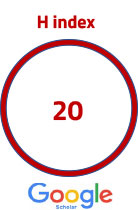| Acceptance rate | 46% |
|---|---|
| Time to first decision | 6 months* |
| Time to decision with review | 50 days* |
*Approximate number of days
**The days mentioned above are averages and do not indicate exact durations. The process may vary for each article.
ACTA Pharmaceutica Sciencia
2006 , Vol 48 , Num 3
DEVELOPMENT AND IN-VITRO EVALUATION OF ORAL SUSTAINED RELEASE FORMULATION OF TRAMADOL HYDROCHLORIDE
Department of Pharmaceutics I.T. Banaras Hindu University, Varanasi-INDIA
Viewed :
20074
-
Downloaded :
4817
Tramadol Hydrochloride (TH) is an effective centrally acting analgesic with good oral bioavailbility and relatively short elimination half-life. The usual dose of TH is 50-100mg three to four times a day, which results in decreased patient compliance and increased incidence of side effects especially on long term use, in conditions like arthritis, osteoarthritis, arthralgia etc. Thus present study was aimed to formulate and evaluate matrix tablets of TH to achieve sustained drug release with reduced frequency of drug administratiion, side effects and improved patient compliance. Matrix tablets of TH were prepared by direct compression technique, using polymers like hydroxypropyl methyl cellulose (HPMC), guar gum (GG) and xanthan gum (XG) alone and in combination in different proportions. Optional excipient, sodium carbonate and diluent lactose were also used. All the batches were evaluated for thickness, weight variation, drug content uniformity, and in-vitro drug release characteristics as per USP XXIV monograph. The drug release characteristics from matrix tablets were compared with commercial sustained release (CSR) tablet of TH. The release kinetics and mechanism of drug release by regression coefficient analysis and Peppas exponential model equation were investigated. Matrix tablets having HPMC prolonged the rate and extent of drug release maximally followed by XG and GG. Increasing percentage of sodium carbonate in core further prolonged the rate and extent of drug release. Formulations with HPMC only followed almost zeroorder drug release whereas all other batches followed either Higuchi or super case II transport mechanism. Prepared matrix tablets provided more sustained drug release as compared to CRS tablets.
Keywords :
TRAMADOL HYDROCHLORIDE, MATRIX TABLET, HIGUCHI DIFFUSION, SUSTAINED DRUG RELEASE, HYDROXY PROPYLMETHYLCELLULOSE





